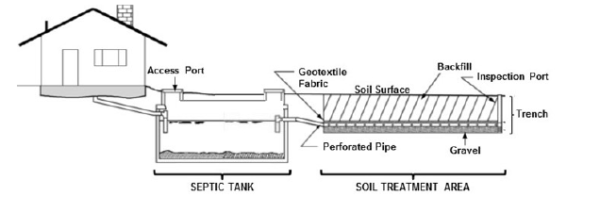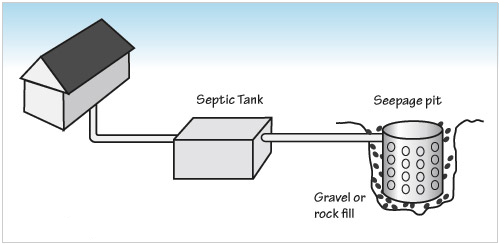What Is a Septic System?
A septic system is a self-contained wastewater treatment solution for homes not connected to a municipal sewer. It safely processes and disperses household wastewater on-site.
How Does a Septic System Work?
Most residential septic systems consist of a large concrete tank (≈1,500 gal) and a leach field (lateral lines). Wastewater enters the tank, where natural bacteria separate solids into:
- Scum: Fats, oils & grease float on top.
- Sludge: Undigested solids settle at the bottom.
The remaining effluent flows into perforated PVC laterals buried in gravel trenches. Here, a “biomat” of beneficial microbes further filters the water before it seeps back into the soil and groundwater.
Common Septic System Types
1. Conventional Tank & Leach Field
Waste separates in the septic tank; effluent disperses through gravel-lined lateral trenches back into the soil.

2. Tank & Seepage Pit
Liquid effluent flows into a deep, perforated pit—ideal where yard space is limited.

3. Septic Tank & Lagoon
Effluent discharges into a controlled lagoon or pond, using natural sunlight and microbes for treatment.

4. Aerobic Treatment Unit
Oxygen is injected to boost “good” aerobic bacteria—producing cleaner effluent and reducing leach field maintenance.

How to Tell If You Have a Septic System
- Rural location—often lacks municipal sewer connections.
- Visible tank lids or risers in yard.
- Stand pipe or clean-out access outside your home.
- Private well water supply often pairs with septic.
For certainty, schedule a professional septic inspection to confirm your system type and condition.
Call MCM Plumbing today for expert septic system services!
Trademark Notice: MCM Plumbing™ is a trademark owned exclusively by MCM Plumbing. Unauthorized use of the name, logo, or any likeness is strictly prohibited without written permission.
